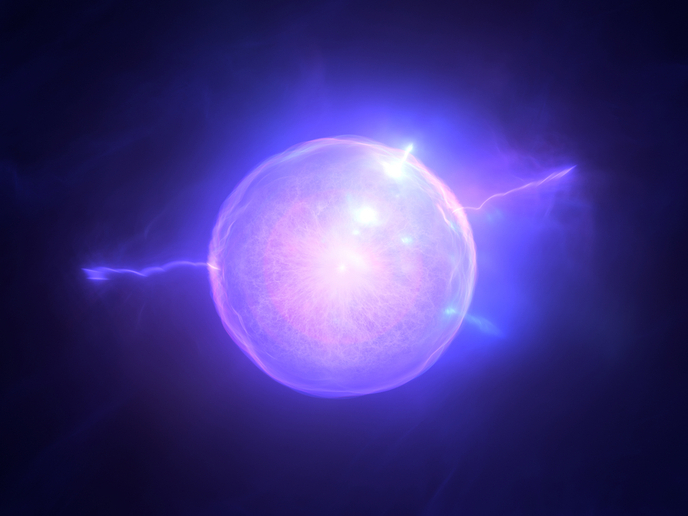KATRIN experiment breaks the 1-electronvolt barrier for neutrino mass
Neutrinos are tiny, neutral subatomic particles with very little mass – so little that for a long time scientists thought it was zero. They are the most abundant particles in the universe that have mass, but the fact that they rarely interact with other matter makes them incredibly difficult to detect and their mass extremely challenging to measure. Researchers taking part in the international Karlsruhe Tritium Neutrino (KATRIN) experiment have now succeeded in measuring the mass of a neutrino with remarkable accuracy. But why is knowing a neutrino’s mass so important? The fact is that these tiny neutrinos are relevant to both particle physics and cosmology, pointing to new physics phenomena beyond current models and playing an important role in the formation of large-scale structures such as galaxies. Knowing their mass scale would therefore provide invaluable insight into the workings of the universe. With partial support from the EU-funded SENSE project, KATRIN scientists have now determined a new upper limit for a neutrino’s mass: 0.8 eV. Their findings(opens in new window) were published in the journal ‘Nature Physics’. In the KATRIN experiment, the researchers examined an unstable hydrogen isotope called tritium undergoing a radioactive decay process known as beta decay. To measure the mass of the neutrino, they studied the energy distribution of electrons released in the beta decay process. As reported in a news item(opens in new window) posted on the website of the Max Planck Institute for Physics run by SENSE project partner Max Planck Society, such an endeavour “necessitates a major technological effort: the 70 meter long experiment houses the world’s most intense tritium source as well as a giant spectrometer to measure the energy of decay electrons with unprecedented precision.”
Better sensitivity
Since the start of measurements in 2019, the research team has enhanced the experiment’s sensitivity by increasing the tritium source activity (the rate at which particles are generated) by a factor of 3.8 and reducing background noise by 25 %. Experiment co-spokesperson Prof. Dr Christian Weinheimer of the University of Münster in Germany comments on the improvements made: “the increase of the signal rate and the reduction of background rate were decisive for the new result.” In the same news item, Prof. Dr Guido Drexlin of Germany’s Karlsruhe Institute of Technology, where the KATRIN experiment is being performed, describes the experiment as “now running like perfect clockwork.” The determination of a new upper limit of 0.8 eV on the neutrino mass marks the first time in history that an experiment of this type has entered the sub-eV mass range. The previous upper limit on this mass obtained by KATRIN scientists in 2019 was equal to 1.1 eV. “The particle physics community is excited that the 1-eV-barrier has been broken by KATRIN,” remarks neutrino expert Prof. John Wilkerson of the University of North Carolina, United States. The KATRIN team will continue measurements of the neutrino mass until the end of 2024, when the SENSE (Sterile neutrino search in tritium beta decay) project also ends. Until then, the researchers aim to “not only steadily increase the statistics of signal events” but also make “improvements to further lower the background rate.” For more information, please see: SENSE project(opens in new window)



